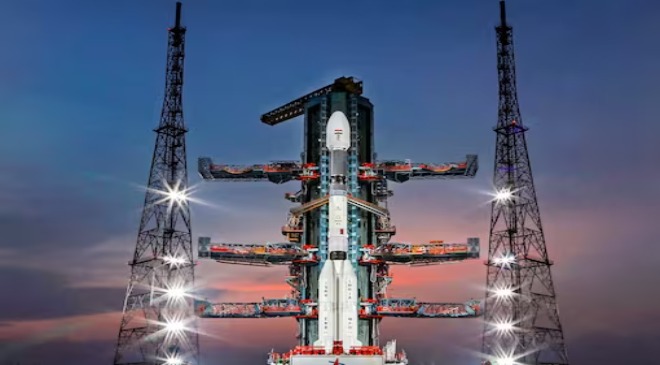The race to the uncharted south pole of the Moon is quickening with India’s Chandrayaan-3 and Russia’s Luna-25 gearing up for lunar landings next week.
Chandrayaan-3, the lunar mission by the Indian Space Research Organisation (ISRO), has successfully established a nearly circular orbit around the Moon. This comes after the spacecraft made a successful maneuver on Wednesday, aligning the spacecraft into a lunar orbit. The Vikram lander is scheduled to separate from the propulsion module today.
Read More: Over 200 Tourists Stranded After Bridge Collapses In Uttarakhand’s Rudraprayag Due To Heavy Rains
The race to the uncharted south pole of the Moon is quickening with India’s Chandrayaan-3 and Russia’s Luna-25 gearing up for lunar landings next week, each mission holding significant implications beyond the thrilling competition in the skies.
While Chandrayaan-3 plans to be the first to land on the Moon’s south pole, Luna-25’s swift trajectory has cast new light, say experts as anticipation builds up. The proximity, possible overlap, of their landing dates — August 21-23 for Luna-25 and August 23-24 for Chandrayaan-3 — has intensified global attention.
Read More: 1 lakh loan at 5% interest: What is PM Vishwakarma Scheme
Chandrayaan-3, the third mission in India’s lunar exploration series, began its journey on July 14 this year and successfully entered lunar orbit on August 5. It is meticulously adjusting its orbit in preparation for a soft landing attempt within 40 days of launch.
Russia, which is making a momentous return to lunar exploration, its first in almost five decades since the iconic Soviet-era Luna-24 mission in 1976, launched Luna-25 on August 10. It is taking a more direct trajectory to the Moon, potentially allowing it to attempt a landing as early as August 21, about 11 days.
The rapid journey is attributed to the mission’s lightweight design and efficient fuel storage, enabling it to take a shorter path to its destination.
Read More: PM-eBus Sewa scheme targets Rs 57,613 crore to deploy 10,000 e-buses in India
“Will the race make a difference? In the grand scope of cosmic exploration, the order of arrival may not significantly alter the lunar landscape. Yet, the knowledge gained from each mission will enrich our understanding of the Moon’s past and potential. The value lies in the sum of our combined efforts,” Chrisphin Karthick, scientist at Bangalore’s Indian Institute of Astrophysics, told PTI.
A key factor in the differing arrival times of the two missions is their respective mass and fuel efficiency. Luna-25 has a leaner lift-off mass of only 1,750 kilograms, significantly lighter than Chandrayaan-3’s 3,800 kg. This reduced mass allows Luna-25 to accelerate more effectively, according to India’s space agency ISRO.





































